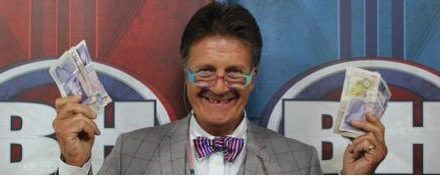What connects a ménage a cinque in Edwardian England, lesbian salons in 1920s Paris, finger snapping and cannibalism? The answer is the harpsichord. As any companion to western music explains, a harpsichord is an historic keyboard instrument used widely up the eighteenth century but then mostly supplanted by the fortepiano and pianoforte, before coming back into use in a revival of early music performance practice in the 20th century. But these standard notices tend not to pay attention to the occasional but intriguing instances when the harpsichord participates in the storytelling in television programs. The harpsichord has had a particular impact and experienced a form of revival unlike but indebted to its use by classically trained musicians to perform Renaissance and Baroque music. From the 1960s, a brief but sustained interest in the harpsichord registered in television and was mirrored in popular music. This ‘other’ revival of the harpsichord is the focus in this study, which asks why the harpsichord appeared and what it was taken to mean and represent in programs including The Addams Family, The Avengers and Star Trek, and why the instrument has resurfaced in Hannibal.

Partly the impact of a harpsichord on television is because it is inherently decorative. Unlike a piano, whose mechanism is contained inside a plain timber case, a harpsichord is normally ornately decorated with painting and carving. The distinctive visual stylings of the harpsichord is used to greatest effect in The Addams Family, where Lurch’s harpsichord, an ornate ‘Krupnik’ is part of the eccentric decoration of the Addams family mansion. But in The Addams Family the visual style complemented and interacted with harpsichord music, music that was both extra-diegetic and at times also heard by characters within the program. To give an unusual sound to the theme music, composer Vic Mizzy used a harpsichord along with the famous finger snapping. But within the program characters could also hear Lurch playing the instrument. In the episode ‘Lurch and his harpsichord’ (1965) Lurch plays a rather loose version of a Mozart Sonata while Gomez and Morticia dance, before Lurch switches to ‘Rock around the clock’ to please Uncle Fester, but still on the harpsichord. In ‘Lurch, the Teenage Idol’, hordes of screaming teenagers become obsessed with Lurch’s exuberant keyboard music and the Addams’ daughter Wednesday performs the Watusi to it. Mizzy’s decision to use a harpsichord in The Addams Family is contextualised by the use of the instrument in other television themes. Patrick McGoohan’s Dangerman featured one in its theme song. So too did Laurie Johnson’s theme for The Avengers.
The Addams were however at least human and on earth but a harpsichord also appeared in far outer space in ‘The Squire of Gothos’, a 1967 episode of Star Trek. A childish but dangerous alien, Squire Trelane, has used mental powers to create an eighteenth-century style chateau and uses the same powers to play keyboard works by Domenico Scarlatti and Johann Strauss on a harpsichord. Hard on its heels from Britain is the 1967 episode ‘Dance of the Dead’ of the spy series The Prisoner showed a harpsichord being played at a macabre fancy dress party. A little earlier on British television in The Avengers episode ‘A Touch of Brimstone’ (1965) the louche and murderous aristocrat the Honorable John Cleverly Cartney played the Virginals, a close relation of the harpsichord. What then did the harpsichord represent to those using it in the 1960s? Neither Lurch nor his instrument were in any way normal, and neither was the Squire, the Honourable Cartney nor the inhabitants partying in ‘the village’ where the Prisoner was trapped. The lyrics to the theme music for The Addams Family in which the harpsichord is heard playing declared the household was ‘creepy and kooky, altogether ooky’. Was the harpsichord also ooky and kooky?
Near contemporary with the use of the instrument in television music was the inclusion of the harpsichord among instruments used in studio recordings by The Beach Boys, The Mamas & the Papas, The Doors and Simon & Garfunkel in the US. B Bumble and the Stingers (actually session musicians) used a piano is their one hit wonder arrangement of Tchaikovsky’s Nutcracker Suite but stuck tins on the instrument’s hammers to simulate the sound of a harpsichord. On their 1968 album ‘The Hangman’s Beautiful Daughter’, the Incredible String Band used a harpsichord among a panoply of weird and unusual instruments such as the Oud, the Kazoo and the Jew’s Harp. In 1967 Jimi Hendrix played one at Olympic Studios in London to record an experimental version of ‘Burning of the Midnight Lamp’. Phil Spectre’s colleague Jack Nitzsche played the harpsichord for the Rolling Stones’ ‘Lady Jane’ in 1966. The Yardbird’s single ‘For your love’ featured a harpsichord played by Brian Auger.
The use of the instrument in popular music is also contextualised by its revival in so-called authentic performance practice, a musicological movement that was gaining a space in performance halls and on recorded discs by the 1960s. Because of the revival of the instrument for the performance of what is variously called ‘early’ or ‘ancient music’, or the keyboard repertoire of the fifteenth to eighteenth centuries, there were for the first time in the 20th century harpsichords that were available and in tune. Until their revival they had been literally museum pieces, on display in collections of old instruments but silent and musicologically redundant. But because of their use in recital and in recordings by pioneering musicians including Arnold Dolmetsch, Violet Gordon Woodhouse and Wanda Landowska, harpsichords began to be made again and became available from the 1930s onwards.
But I asked above, what did this use of the harpsichord mean? Did program makers find it kooky? The revival of the harpsichord in television and in popular music was quite unlike the early music revival of the 20th century in terms of the uses made of the harpsichord. But on the other hand, while the early music revival was arguably a ‘serious’ movement devoted to the historically correct performance of old keyboard music, this same revival had some unusual progeny in terms of the perception of the harpsichord and those who played it.
On one level, the entire early music revival itself was fairly kooky as far as many mainstream classical musicians were concerned. Particularly so for musicians and composers who subscribed to an almost Darwinian view of musical evolution (classical music was more developed than Baroque, Beethoven was better than Mozart and so on), the supplanting of the harpsichord by the piano had been a natural evolutionary step and there was no reason for the instrument to ever be revived. In this way the early music revival was counter cultural in suggesting that modern music and modern performance practice was not in some evolutionary way inherently ‘better’ than earlier music and instrumentation.
The champions of early music were as recherché as their instrument. One was Mrs Violet Gordon Woodhouse, an upper class English woman who lived in a ménage a cinque with her husband and three other men, while also finding time to devote to the serious scholarly performance of Renaissance and Baroque music. In Paris, Wanda Landowska became widely known for her performances and recordings of early music on the harpsichord (she even performed for Tolstoy in Russia) but after her husband’s death in a car accident was also believed to frequent Natalie Barney’s lesbian salon. When a biography of Mrs Gordon Woodhouse was published in 1996, one reviewer, Norman Stone in the Sunday Times,asked rhetorically ‘what is it about lady harpsichordists?’ The facetious question was a reminder of the parallel between the counter cultural private lives (for pre-war Europe) of Gordon Woodhouse and Landowska and their equally counter cultural actions in reviving public performance on the harpsichord. Before the Second World War both how they lived and what they played were to varying degrees weird to scandalous, reputations captured by Norman Stone’s question about them. The comment is also a valuable reminder that while the early music revival was and remains a type of musicology underpinned by entirely serious research and performance, its origins also contain the scandals and enjoyable eccentricities of its pioneers.
That is not to suggest that Vic Mizzy, Gene Roddenberry or other users of the harpsichord in television were thinking specifically of the early pioneers of its revival. But more generally, the association of the instrument with the unusual prevailed, making it the perfect choice of instrument for the Addams’ butler and the Squire of Gothos. Another exponent of alternative lifestyles has recently returned the harpsichord to American television. Hannibal Lector’s educational attainments and his good taste in food and wine (human flesh excepted) have long characterised him as cultivated as much as he is insane. That his instrument of choice is a harpsichord therefore should come as no surprise. The NBC series shows Dr Lector playing and composing at a large harpsichord, in line with passages from Thomas Harris’s 2000 novel Hannibal, which explains Lector’s preference for early keyboard instruments. The composer for the NBC series Brian Reitzell has also commented in an interview about the natural association between Lector and the harpsichord because the mechanism of a harpsichord does not sustain the notes, leading to it being called the ‘instrument of death’. It’s actually extremely satisfying seeing Lector playing Bach on his harpsichord, as it places him in good and macabre television company while also uniting the eccentric harpsichordists of British and American television with the equally unusual real life pioneers of early music performance. Arguably Gordon Woodhouse, Landowska or any other ‘serious’ exponent of harpsichord music would not have envisaged Wednesday’s Watusi or the Squire’s mind tricks with Scarlatti, but the early music revival did have unexpected impact is allowing the ‘other’ revival of the harpsichord on the small screen.
Dr Marcus Harmes lectures at the University of Southern Queensland, Toowoomba, Australia. He has authored books including Doctor Who and the Art of Adaptation (2014) and the entry in the Devil’s Advocates series on The Curse of Frankenstein. He has a long standing love of the harpsichord and harpsichord music.






